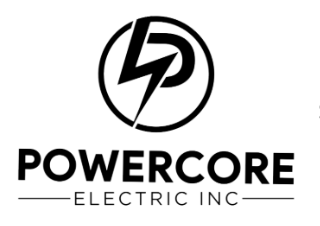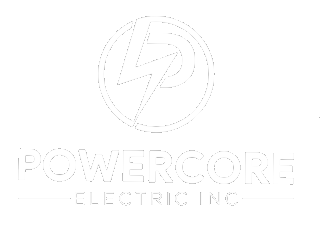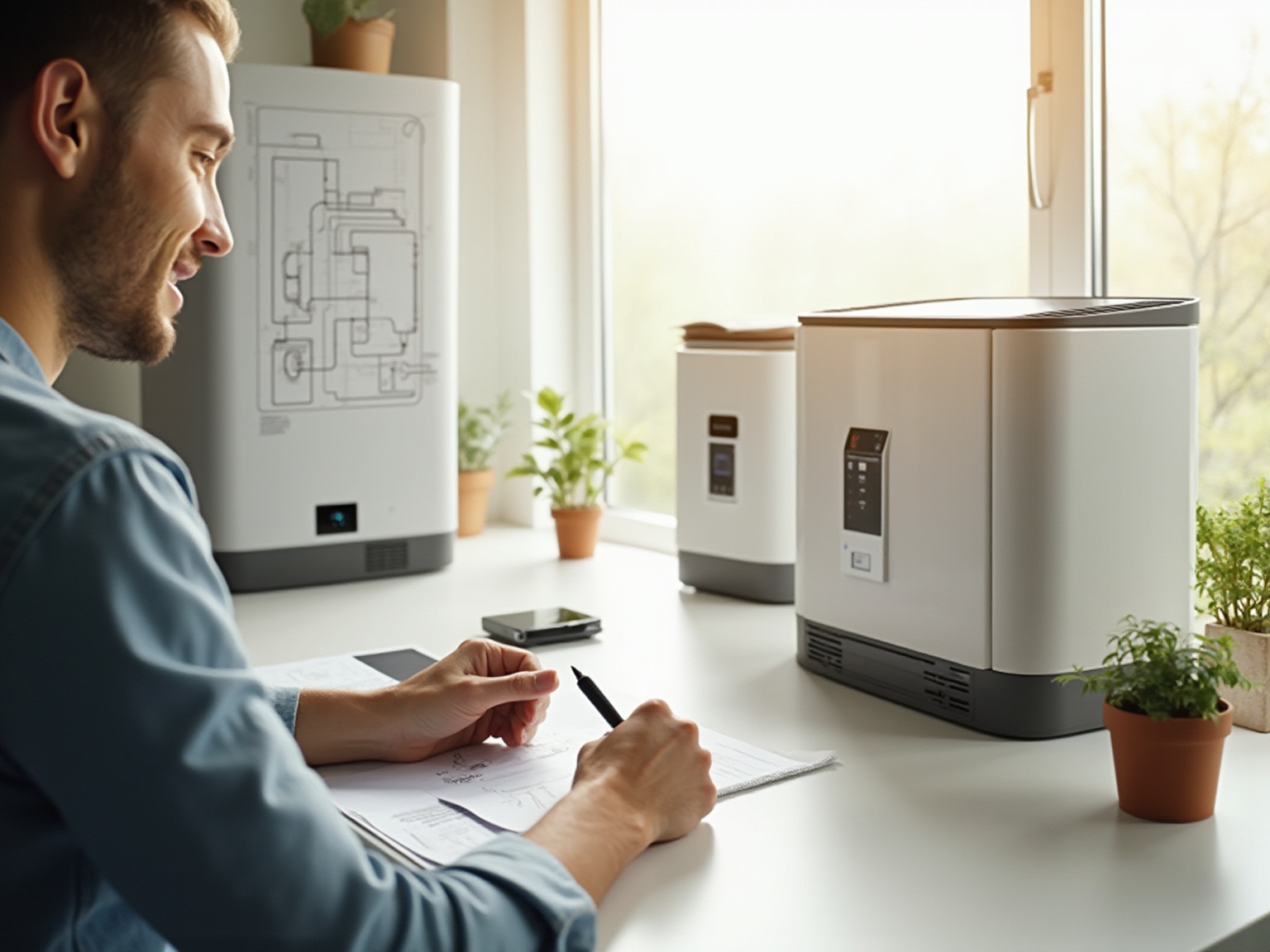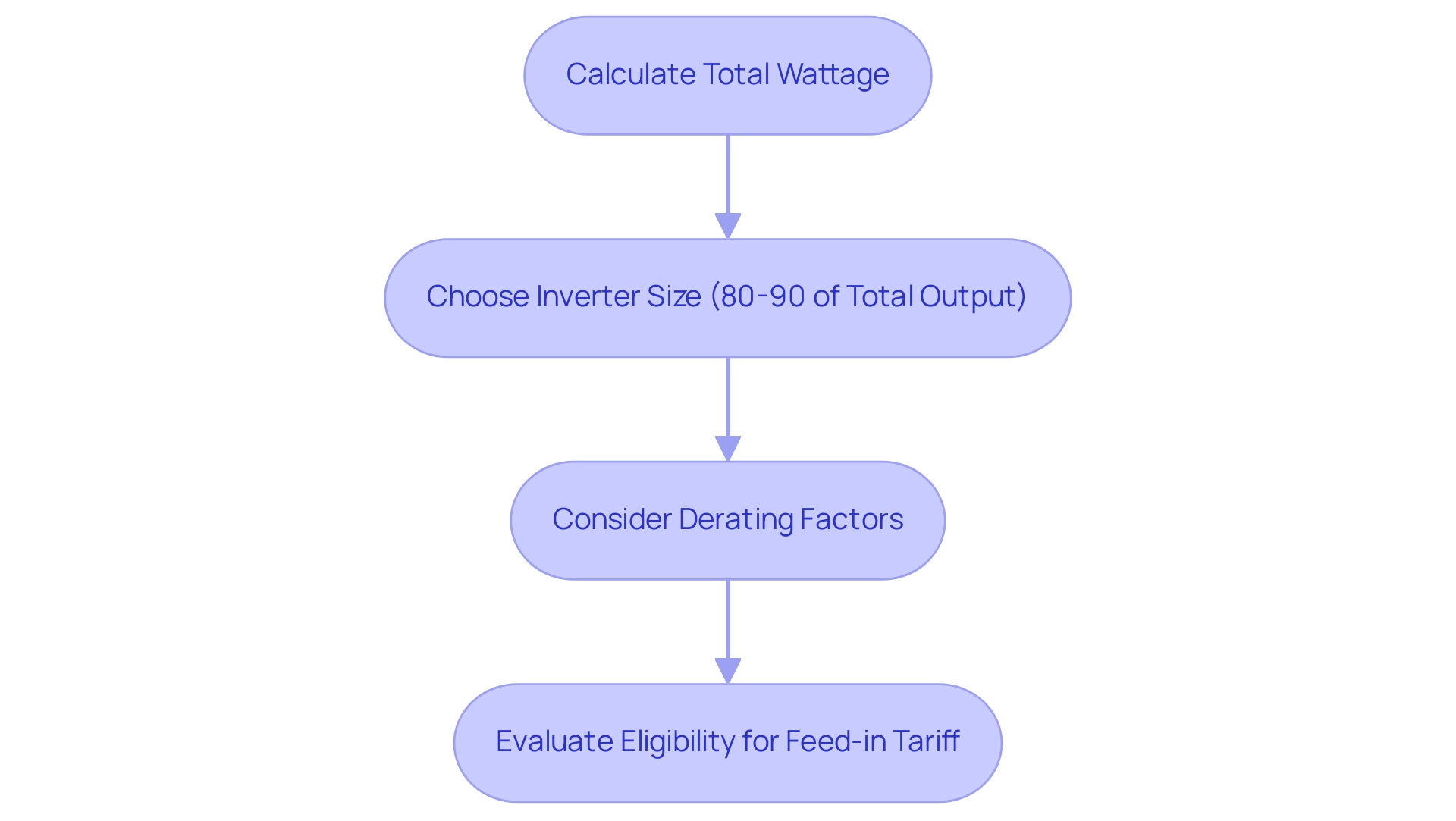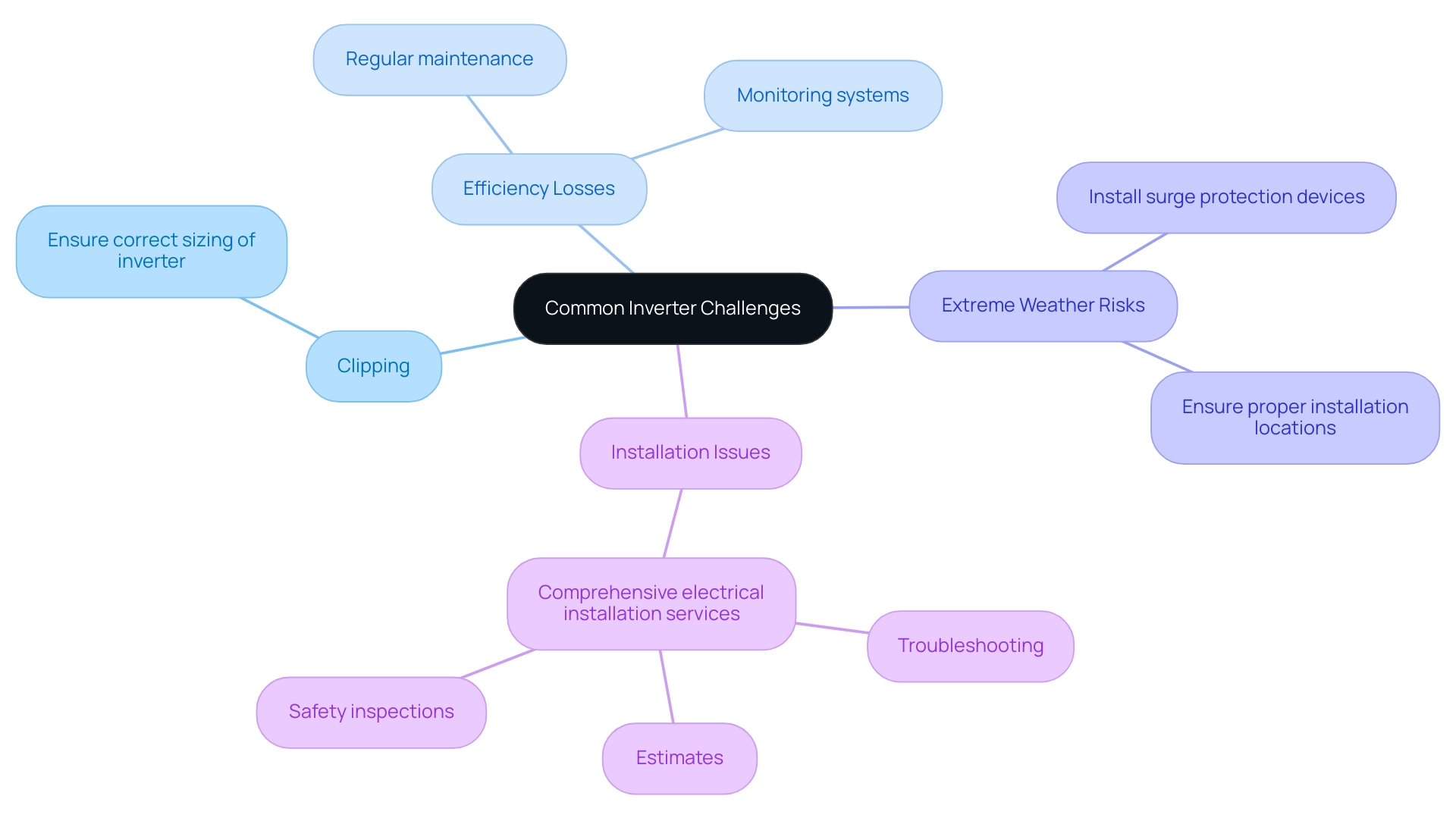Overview
Choosing the right inverter for your solar panel system involves understanding the different types available, their efficiency ratings, and how well they match your energy needs. The article emphasizes that factors like inverter type, sizing relative to solar output, and maintenance practices are crucial for optimizing performance and ensuring effective energy management.
Introduction
Navigating the world of solar energy can feel overwhelming, especially when it comes to understanding the essential components that keep your system running smoothly. At the heart of this technology lies the inverter, a crucial device that transforms the direct current (DC) generated by solar panels into alternating current (AC), powering everything from your refrigerator to your lights.
As homeowners increasingly turn to solar solutions, grasping the intricacies of inverters becomes vital—not just for efficiency, but for maximizing the benefits of this sustainable energy source. This article delves into the different types of inverters available, key considerations for selecting the right one, and common challenges that may arise, all while providing practical tips to ensure your solar setup operates at its best.
Whether you’re a seasoned solar user or just starting your journey, understanding these elements will empower you to make informed decisions that enhance your energy independence and contribute to a greener future.
Understanding the Role of Inverters in Solar Energy Systems
The inverter for solar panel system is genuinely the core of your power system. They play an essential role in the inverter for solar panel system by transforming the DC electricity produced by into AC electricity, which powers your home appliances. Without an inverter for solar panel system, the power generated by your panels would merely be unusable.
The inverter for solar panel system also manages the flow of energy, allowing for excess energy to be fed back into the grid or stored in batteries for later use. This function is essential because it directly influences the efficiency and effectiveness of your inverter for solar panel system. Regular maintenance, including cleaning , can prevent efficiency losses of up to 25%, making it crucial to consider services like:
- Sunshine Cleaners
- Solar Shine
- Eco-Solar Clean
These services prioritize eco-friendly practices and tailored packages.
For instance, Eco-Solar Clean specializes in innovative waterless cleaning techniques that conserve water, making it ideal for drought-prone areas. As the renewable energy sector predicts a 34% increase in 2024, comprehending the progress in conversion technology becomes even more essential for optimizing the advantages of your energy system. Moreover, advancements in conversion technology have improved efficiency rates significantly this year, making it essential to keep an eye on these developments.
As remarked by expert Hassan Farhat, ‘What is the pitch distance and what effect does it have on photovoltaic plant output and efficiency?’ This emphasizes the significance of taking into account various factors that can affect performance. Additionally, local weather conditions and surrounding vegetation can significantly influence how often your panels need to be cleaned, which is a critical aspect of maintaining efficiency.
Sustainability remains a key concern, as the current recycling rate of PV modules is only 10%. Improving recycling initiatives is essential for the energy sector, and understanding the role of an inverter for solar panel system in enhancing overall system efficiency can aid in this objective.
Exploring Different Types of Solar Inverters: Which One is Right for You?
When it pertains to photovoltaic converters, you’ll discover three main varieties: string converters, micro converters, and an inverter for solar panel system, in addition to power optimizers. Let’s break these down to help you determine which inverter for solar panel system might be the best fit for your home, as string inverters are the most widely used in residential setups. They link several photovoltaic modules in a series, making them a budget-friendly option.
However, keep in mind that if one module gets shaded, it can cause energy loss for the whole string. This can be a drawback for the inverter for solar panel system, especially if your roof has varied sunlight exposure. The global market for inverter for solar panel system is expected to grow at a CAGR of 6.00%, highlighting the increasing relevance of solar technology in residential applications. Micro inverters offer a different approach.
These little powerhouses are connected to each separate unit, allowing them to function independently. This means they can maximize energy production, particularly in areas where shading might be an issue. If you have trees or other structures that cast shadows on your units at different times of the day, using an inverter for solar panel system with microinverters could be your best bet.
Then we have power optimizers, which combine the best of both worlds in the context of an inverter for solar panel system. They operate alongside string converters to enhance performance by ensuring that each panel functions at its peak efficiency, even if others are underperforming. In Spain, the photovoltaic converter market is anticipated to expand at a CAGR of 3.6%, with a market size of USD 258.60 million in 2024, suggesting a robust demand for these technologies in the region.
Selecting the appropriate inverter for solar panel system truly depends on your particular installation situation and power requirements. Moreover, combining heating systems with these devices can further improve overall power efficiency and sustainability for homeowners. Solar heating systems not only provide economic benefits by reducing utility bills but also contribute to environmental sustainability by lowering greenhouse gas emissions.
According to Cognitive Market Research, the Rest of is anticipated to experience growth at a CAGR of 4.7% during the forecast period, highlighting the significance of choosing the appropriate device for maximizing power generation. By understanding the strengths and weaknesses of each type, along with the advantages of incorporating heating solutions, you’ll be better equipped to make a decision that aligns with your objectives for renewable energy in your home.
Key Considerations for Choosing the Right Solar Inverter
Selecting the appropriate inverter for for your residence is an essential step in optimizing the advantages of your photovoltaic system. Before engaging in choosing an inverter for solar panel system, it’s crucial to comprehend how solar cells function. Solar panels transform sunlight into direct current (DC) electricity, which an inverter for solar panel system subsequently converts into alternating current (AC) for use in your home.
Begin by checking the efficiency rating of the inverter for solar panel system; this indicates how effectively it converts DC into AC. A higher efficiency rating means more savings, which is always a win for your wallet! For instance, the SHP PEAK3 FLEX device has a power range of 52-172 kVA, showcasing its capability for various home sizes and energy needs.
Next, pay attention to the warranty period offered by the manufacturer. A longer warranty often suggests that the device is built to last, showcasing better quality and reliability. To assess the inverter for solar panel system effectively, consider the following steps:
- Research and compare efficiency ratings of various inverter models for solar panel systems.
- Check compatibility with your photovoltaic model, as some inverters for solar panel systems work better with certain modules.
- Look for additional features, such as monitoring capabilities, which can be invaluable for tracking your system’s performance.
Tigo’s system, for example, is UL 1741 listed and comes in models of 3.8 kW, 7.6 kW, and 11.4 kW, providing reliable options for homeowners. Remember, the average house in the U.S. uses 10,791 kWh of electricity annually, meaning 17-30 standard 400-watt panels could power your entire home. By considering these factors, along with optimal battery selections and government initiatives that promote renewable energy adoption, you’ll be well on your way to choosing a device that not only meets your energy requirements but also improves your renewable experience while contributing to a more sustainable future.
Sizing Your Inverter: Matching Capacity with Solar Panel Output
Correctly sizing your inverter for is crucial for maximizing the efficiency of your power system. Begin by calculating the total wattage of your solar devices. For instance, if you have a 1.6 kW system consisting of nine 170-watt units, your total output is 1,530 watts.
To ensure your device functions optimally, it’s advisable to choose one that can manage slightly less than your solar units’ total output. This method assists in preventing clipping, where the device cannot handle all the energy produced by your modules. A helpful guideline is to select an inverter for solar panel system that is 80-90% of your system’s total output, which not only improves efficiency but also guarantees you’re maximizing your energy investment.
As observed in the case study ‘Calculating the Right Size of the Device,’ aligning the capacity of the equipment closely with the panel output is crucial for optimal performance. Additionally, systems with higher derating factors can utilize smaller inverter capacities relative to the array size, allowing for more flexibility in your setup. As Nisarg wisely points out, ‘If you are receiving the feed-in tariff in WA, expanding your system could change your eligibility,’ emphasizing the importance of careful planning in your energy setup.
For a comprehensive understanding of renewable alternatives, explore recent posts like ‘How Homeowners Can Benefit from Government Programs’ and ‘Top Battery Choices for Efficient Power Storage,’ which discuss the broader economic and environmental benefits of sustainable sources, including innovative technologies like Tesla home chargers and the advantages of cleaning services in maintaining efficiency and system performance. Stay updated and optimize your renewable power advantages!
Common Inverter Challenges and How to Overcome Them
The inverter for solar panel system is essential for transforming the power produced by into usable electricity for your home, but it can face a few typical challenges. One significant issue is clipping, which occurs when the device can’t process all the energy produced, especially during those bright, sunny peak hours. To combat this, ensure your inverter for solar panel system is correctly sized for your system’s output—this is essential for optimizing performance.
Efficiency losses can also arise due to excessive heat or improper installation, making regular maintenance key. Basic tasks such as cleaning the device and inspecting all connections can ensure everything operates seamlessly. Additionally, investing in monitoring systems that provide real-time performance data can help you promptly catch and address any issues.
This proactive approach not only enhances your system’s efficiency but also keeps you informed about your solar energy production. Furthermore, extreme weather events, such as lightning strikes, can harm power converters, leading to operational failures. Installing surge protection devices and ensuring proper installation locations are critical steps to safeguard investors against such risks.
, including estimates, troubleshooting, and safety inspections, are essential for ensuring that your inverter for solar panel system operates effectively and safely. Given that the residential renewable energy market is expected to see 5.6 GW of installations this year, addressing these challenges effectively is crucial. With 85% of installers utilizing NREL’s SolarAPP+ permitting software, proper installation significantly eases the permitting process, vital for optimal inverter performance.
And remember, while solar panels are a fantastic investment, pairing them with a reliable home generator ensures you’re prepared for unexpected power outages, offering peace of mind for eco-conscious homeowners.
Conclusion
Understanding the intricacies of solar inverters is crucial for anyone looking to harness the power of solar energy effectively. Inverters play an essential role in converting DC electricity into AC, making it usable for everyday home appliances. With various types available—string inverters, microinverters, and power optimizers—homeowners can choose the best fit based on their unique needs and installation scenarios.
When selecting an inverter, factors such as efficiency ratings, compatibility with solar panels, and warranty periods are key considerations that can significantly impact the overall performance of your solar system. Proper sizing of the inverter is equally important, as it ensures optimal energy production and prevents issues like clipping. Moreover, staying informed about common challenges and proactive maintenance can lead to a smoother solar experience, maximizing both energy savings and system longevity.
As the solar industry continues to grow, embracing advancements in inverter technology and understanding their role in enhancing system performance will empower homeowners to make informed decisions. By taking these steps, not only is energy independence achievable, but a sustainable future can also be fostered, contributing to a cleaner environment for generations to come. Investing time in learning about solar inverters today paves the way for a brighter, greener tomorrow.
